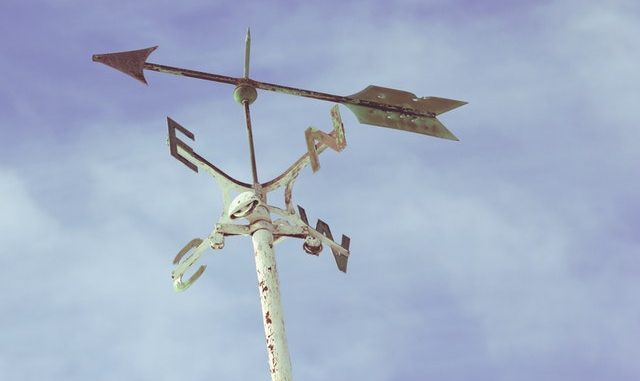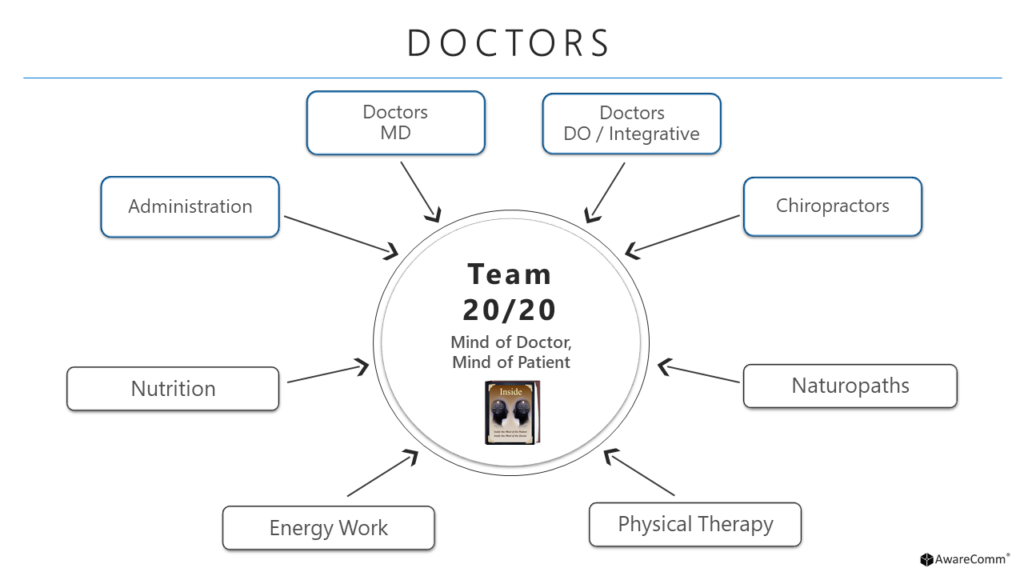
Opening Insights: Time for a Change
As human beings, our greatness lies not so much in being able to remake the world…
as in being able to remake ourselves.
MAHATMA GANDHI
Many addiction sufferers choose to enroll themselves in a structured and doctor supported rehabilitation program because they discover through experience that their methods for living a healthy life just aren't working. It becomes necessary to put their trust in something outside themselves, to be guided by the knowledge and experience of others, to choose to do life another way.
For many, rehabilitation is the light at the end of the tunnel, but what happens when the light you see is just another lure placed in front of a hidden set of jaws rimmed by teeth designed to feed on you?
Informational Insights: Not What We Expected
The following article was published by Kaiser Health News (KHN), "a nonprofit news service committed to in-depth coverage of health care policy and politics." It was written by Bernard J. Wolfson, "Managing Editor for California Healthline, served most recently as business editor of the Orange County Register."
Pattie Vargas saw with frightening clarity that her son Joel, 25 at the time, had a life-threatening drug problem. He came home one day in 2007 “high as a kite,” went to bed and slept four days straight, Vargas, now a 65-year-old resident of Vacaville, California, recalls.
As Joel lay listless, a terrified Vargas realized her son needed help, but she didn’t quite know where to start. She searched online and dialed the number of a treatment center she found.
The person who answered said reassuring things, walked her through the options, then sent a man to lead an intervention at the family’s home in Escondido, California. The intervention ended with Joel reluctantly climbing into the guy’s car and being whisked away to residential treatment in Laguna Beach, about 60 miles away.
Vargas was relieved to see her middle child head off to treatment — even though the 30-day program cost $39,000. Little did she suspect it was only the beginning of an ultimately fruitless cycle of rehab and relapse. Joel’s drug of choice back then was methamphetamine, but by the time he died of heart complications a decade later, he was hooked on heroin.
As Vargas later realized, there are better ways than the internet to find effective rehab. With the U.S. death rate from drug overdoses more than triple what it was 20 years ago and alcohol misuse among the top preventable causes of death, the need for effective addiction treatment is massive. But finding affordable and reliable care, despite a proliferation of rehab centers in recent years, can be nearly impossible.
“There are good providers out there. They are few and far between, and it’s really hard to tell the good from the bad,” says Garrett Hade, co-founder of The Voices Project, an addiction recovery advocacy group.
The Affordable Care Act, by expanding insurance rolls and requiring insurers to cover treatment of substance use disorders on par with other medical conditions, has helped spawn explosive growth in America’s rehab industry. Unfortunately, that includes some operators interested more in the money than the welfare of patients.
As competition has intensified, some rehab operators have resorted to wily and unscrupulous methods to draw clients. A common practice is to pay “body brokers” thousands of dollars to troll social media and sobriety meetings for insured people who need treatment.
Some facilities fraudulently sign people up for insurance, fly them to treatment centers across the country and bill tens of thousands of dollars for multiple urine tests and other services of dubious necessity. Some operators have even plied their clients with drugs between stints in rehab to recycle them back into the program.
Sue Harris, a San Diego resident, sent her son Jameson to a rehab center in West Palm Beach, Florida, on the recommendation of a “treatment coordinator.” It was the worst decision, she says. Jameson called from Florida and told her, “‘I’m going to die here, Mom. There are drugs everywhere,’” Harris, 59, recalls. He was right: He died shortly afterward from an overdose of fentanyl-laced heroin.
A less shady practice by treatment facilities is to invest in strategies to push their names to the top of internet search results. “So you are not necessarily getting the best person. You are getting the ones who have paid money for search engine optimization,” says David Skonezny, who runs a Facebook page called It’s Time For Ethics In Addiction Treatment.
So, what’s a better option for finding a reputable rehab center? Try attending meetings of recovery programs such as Alcoholics Anonymous or LifeRing. People who go to those meetings have experienced the same things you or your loved ones are going through and often share tips and advice. But beware of anybody hard-selling a specific program.
You can also call the federal Substance Abuse and Mental Health Services Administration’s 24/7 helpline (800-662-HELP), which provides information on addiction as well as referrals to treatment and support groups. A federal government website, www.findtreatment.gov, also offers referrals. If your child has a substance use disorder, the Partnership for Drug-Free Kids provides a wealth of information and support.
Once you have some promising leads, your real homework begins. You must vet them thoroughly — not only to confirm their integrity but to maximize the chance that you or your loved ones will get the personalized care needed.
To weed out bad players, search for complaints against facilities you are considering, if your state puts them online. Unfortunately, California does not — though you can see the ones with revoked or suspended licenses, as well as those operating without licenses, on the website of the Department of Health Care Services.
At this point, Google actually comes in handy: Search the facility by name, paired with red-flag terms such as “fraud,” “indicted” or “body broker.”
An alarm should sound if people running a treatment program ask about your insurance and finances right off the bat, says Cynthia Moreno Tuohy, executive director of Alexandria, Virginia-based NAADAC, the Association for Addiction Professionals. “If I’m more concerned about the money and the insurance, don’t come to me,” she says.
And don’t be dazzled by dollar signs. “Just because it costs a lot of money, don’t think it’s great,” says Vargas, whose daughter, Rebekah, also struggles with drugs.
It wasn’t until her son was years into his meanderings through rehab that Vargas discovered public treatment programs that don’t cost anything — though they are hard to get into. In California, they are run by the counties and mostly funded by Medi-Cal, the government-run insurance program for people with low incomes.
You can find a list of county programs and contact numbers on the DHCS website under the “individuals” tab.
How do you know what kind of program is a good fit? An initial assessment is critical. Get it done by a doctor with a specialty in addiction rather than at a treatment center.
In California, you can find board-certified addiction-medicine doctors on the California Society of Addiction Medicine website. If you live elsewhere, go to the American Society of Addiction Medicine site.
Ask any potential rehab program about the credentials not only of its physicians, but also the social workers, clinical psychologists and addiction counselors on staff. You can check the addiction-specific qualifications of rehab counselors and social workers by calling NAADAC (703-741-7686), or the organization that credentials them in your state. In California, check the website of the California Consortium of Addiction Programs and Professionals.
Another important question, recovery experts say, is whether a program endorses anti-addiction medications — it should — and is prepared to administer them in-house or through a competent outside party. Don’t let them evade that question.
And remember: Addiction is a lifelong battle. Relapses are common. There’s always hope, though for reasons difficult to ascertain, some people are better at recovery than others.
Harris says Jameson was not one of those people: “He loved his family. He loved life. But he just could not stop himself.”
This KHN story first published on California Healthline, a service of the California Health Care Foundation.
https://khn.org/news/good-rehab-is-hard-to-find/
This article originally appeared on February 5, 2020 in KAISER HEALTH NEWS: Good Rehab Is Hard To Find
Kaiser Health News (KHN) is a national health policy news service. It is an editorially independent program of the Henry J. Kaiser Family Foundation which is not affiliated with Kaiser Permanente.
Possibilities for Consideration: It Takes a Village
Recovering from addiction isn't a cakewalk, nor is it a set of list items to check off, it's a lifetime commitment. The old proverb that states, it takes a village to raise a child, speaks of the need for a caring community to be involved in the cultivation of individuals. That is how recovery is supposed to work.
When the appearance of trust and legitimacy may be purchased online by the highest bidder, it becomes necessary to turn to a now overlooked source of insight. In the days predating the internet, people would seek the guidance of the old timers who had been there, done that and would accept their counsel based on relationships of trust, not just in the individual, but in their community.
Just as it takes a village to raise a child, it takes a community to heal an addict. It also takes a community to raise a business, and when that business conducts itself in a manner that conflicts with community values then resolution is required. What if we could hold these moral outliers accountable for their true intentions?
Changing the Way Things Get Done
To overcome the challenge of misguided leadership values treading upon and replacing the socially responsible values necessarily upheld by recovery caregivers requires a change in the way rehabilitation businesses are supported by their communities.
In order to be accepting of a different way of doing things, a readiness for change in individuals and their organization culture must be seeded and cultivated. Historically, lasting change has been all but impossible to achieve for most people, organizations and cultures.
What if a lasting socially responsible change (to change the way we think, reason and act) could be successfully implemented at a community scale – one community at a time?
Awareness Communication Technology, LLC (AwareComm®) is a multi-gold certified Microsoft Research and Development partner with the mission of harnessing the collective power of Microsoft Technologies with AwareComm’s Technology, Methodology and Sentience Data Science to solve systemic organization challenges, which in turn solves systemic community challenges. This process raises Adaptive Intelligence (AdI™) and drives social-cultural change.

By raising AdI™ in individuals, teams and organizations the power for collective change is created and the power of deceive, divide and conquer is eliminated. This is the strength of collaboration and unity that the AwareComm® platform was built to propagate.
AwareComm's Team 20/20 was formed to implement a new method of partnering businesses, nonprofits and their hosting communities. For example, it's a way to unite the healthcare industry around a common set of principles and values, as it once was in times past.

If the idea of accountability and values as well as honest, open and clear intentions as a foundation to cultivate communities of caregivers is important to you then examine the questions below. If answers come to you as a result, then consider completing the SocraticQ exercise toward the bottom of this page.
Add Your Insight
Take a moment and examine…
- As you reviewed the material above, what stood out to you?
- What is the potential impact, economically and/or socially?
- What action is needed to stop or support this idea?
- You may want to consider whether you:
- want to be aware of,
- should become supportive of,
- would want to be active in this topic?
I have been impressed with the urgency of doing. Knowing is not enough; we must apply.
Being willing is not enough; we must do.
LEONARDO DA VINCI
